Vaux le Vicomte Castle Facts
We are dedicating this article to Vaux-le-Vicomte, one of the most beautiful castles in France, located about 35 miles south of Paris. Far beyond its elegance and beauty, which makes this monument unique is that it took only one nice summer evening for it to go down in history. Its story is above all that of Nicolas Fouquet, King Louis XIV’s Superintendent of Finances, and the happy owner of the Vaux-le-Vicomte castle. The master of this domain seemed to have been born under a lucky star. However, it quit shining on that fateful night of August 17, 1661.
Here Are Some Interesting Facts About Vaux le Vicomte
A Promising Future
In 1635, young Nicolas Fouquet had a promising future in front of him. He was barely 20 years old when he entered public office. Five years later, he became a petitions magistrate, an office as prestigious as it was expensive. At 27, he was appointed paymaster in the North Army. Daring, brilliant, and ambitious, the young man was enjoying life with a disconcerting simplicity. Everything he undertook was successful.
He was just 30 when Cardinal Mazarin hired him, with the mission to fill up the kingdom’s empty coffers. Nicolas Fouquet was a confident young man, but also a lucid one. He understood perfectly well the necessity to be close to power to continue his rise. This is why he bought his first residence in St-Mandé. His garden was adjacent to the Castle of Vincennes; which allowed him to be close to his master, but also closer to the young king and the queen mother.
This same reasoning led him to choose the old castle of Vaux as his next residence a few years later, as it was located in the small commune of Maincy. Every summer, the court would stay nearby, in Fontainebleau. Had the court been at Versailles at the time, no doubt Fouquet would have chosen Versailles!
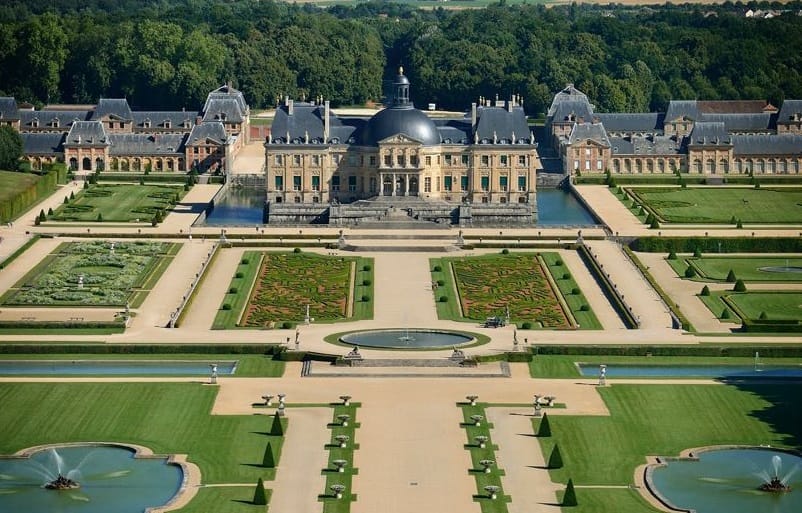
The Spirit of War: Money
Taxes alone were not enough to replenish the kingdom’s coffers, and other stratagems were conceived. For instance, the very wealthy bourgeois could buy themselves a title of nobility, or a very respectable office in the Parliament. One could also purchase a “lettre de cachet”, a letter signed by the king and closed with the royal seal, that contained an order to arrest a family member, for being a little crazy or simply troublesome.
In these cases, one would have to cover all inherent expenses for the person’s confinement, because the day the poor soul’s “accommodation charges” were no longer paid, he would be immediately released; regardless of how dangerous he might be or the specific reasons for his imprisonment. The only matter of concern was that the money kept pouring in. The State took out numerous loans, but the credibility of Cardinal Mazarin, who was at the head of France while Louis XIV was still only a child, eventually shrank away to nothing.
To accomplish this difficult task of collecting funds, the cardinal chose Nicolas Fouquet. This was a brilliant man who was also wealthy and therefore credible. He would be granted loans that were not made readily available to a king who was much too poor, or to a cardinal of dubious honesty.
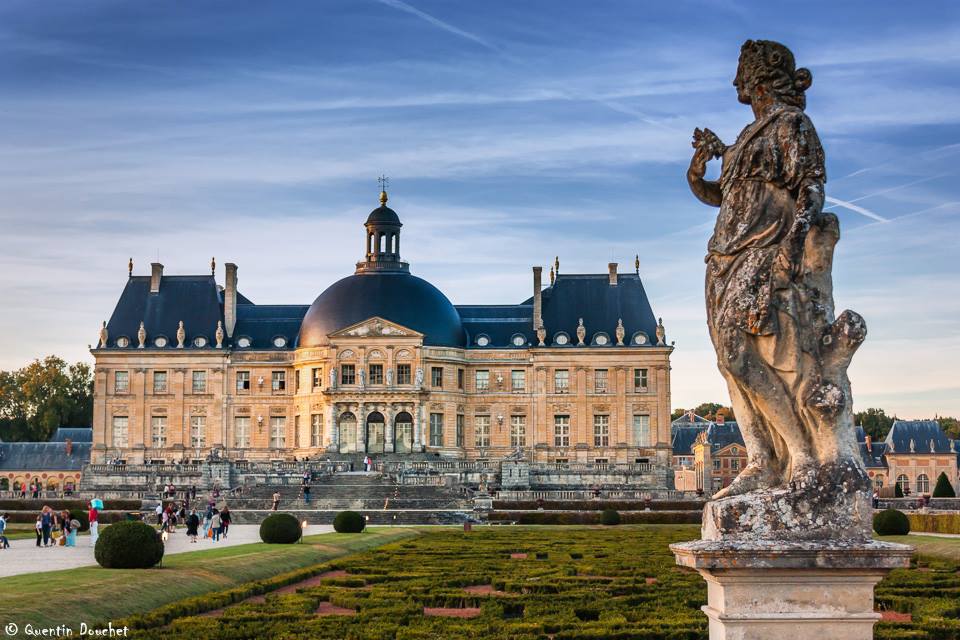
A Dazzling Rise
Nicolas Fouquet accomplished his mission with formidable efficiency. He found the anticipated money through a series of more or less opaque operations, at a time when any means of control was virtually nonexistent. In the process, he allowed a few coins to fall into the cardinal’s pockets, as well as his own. He was already rich, to begin with, but became even more so with the death of his first wife in childbirth, who left him a considerable inheritance. His father also died that same year, and this double inheritance enabled him to buy a medieval-looking castle in the small commune of Maincy, in a huge park sheltered by great walls. He became Lord and Viscount of Vaux on February 1, 1641.
He didn’t immediately transform his castle but continued to acquire land, demolishing no less than three entire villages in the surrounding area to enlarge his estate. At the same time, his career was taking gigantic steps forward, as he became a respectable Public Prosecutor in the Parliament in 1651. He became even richer the following year thanks to the dowry brought to him by his second wife, and in February 1653, Fouquet became Minister of State and Superintendent of Finances under King Louis XIV.
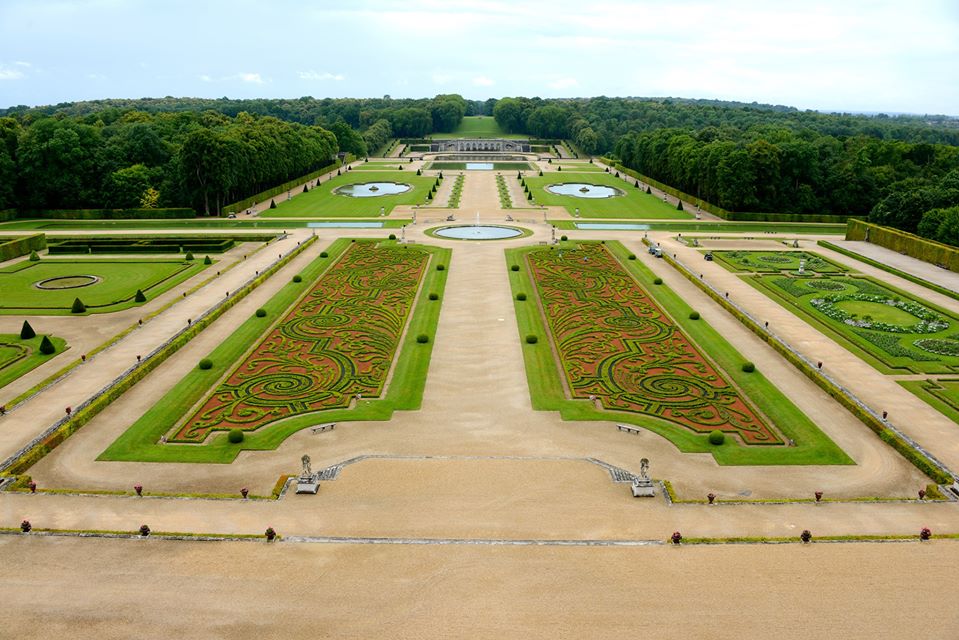
Vaux, a Monument to His Glory
Fouquet had the luck of the bold, and his fortune gave him access to considerable credit lines. All that was missing was a residence worthy of his social standing, and that would become Vaux. He called on the period’s greatest masters of French art; Louis Le Vau, a talented architect already working for the king at the Louvre and at Vincennes; the painter Charles Le Brun, whose work was already very much in demand amid Parisian society; and André Le Nôtre, the king’s landscape architect at the Tuileries.
Construction began in 1657, and it wasn’t long before rumors spread of an excessively large building site. Fouquet realized a little discretion was in order and recommended that the work continue literally behind closed doors. He asked that everyone do their best to push work forward before reaching the “season when everybody goes to the countryside”. There were up to 18,000 workers on-site for whom Fouquet even had a hospital built. A tapestry manufacture was created just to satisfy the demand of the castle, and it was so profitable that Colbert would eventually turn it into the Manufacture des Gobelins; the famous tapestry factory.
It’s not hard to imagine how difficult it was to keep this entire project secret. One day, as the king was complaining to his brother that the work at the Louvre was not progressing fast enough, the latter answered; “His Majesty should appoint himself Superintendent of Finances for just one year, and he would have plenty to build with”.

The Palace of the Sun
His most cherished desire was to turn the old Vaux manor house into a real architectural masterpiece, and a peace site dedicated to the arts and humanities. He wanted to receive his protégés there, among them La Fontaine, Molière, and Corneille, and friends like Mademoiselle de Scudéry and Madame de Sévigné, and above all, the king. The problem was that it never occurred to Fouquet, blinded by his social success and true to the family motto “Quo non ascendet” (How high won’t he rise), that he was going too far. He wanted a splendid gilded residence, decorated with tapestries, paintings, sculptures, and statues built to his glory. As was the fashion at the time, Le Brun borrowed from mythology and allegories to celebrate the superintendent: Hercules symbolized his power, Apollo his mind and taste for the arts, and the Muses his loyalty to the king.
A sumptuous oval drawing room opened onto a huge and magnificent French-style garden. Even though it was his first creation, Le Nôtre accomplished real feats, whether aesthetic or technical, to offer visitors the spectacle of long straight paths, all in perspective, all framing wonderful flower beds and shrubs, adorned with delightful pools of water, gigantic fountains, and grottoes built out of the hillside. It was an absolute wonder and a real masterpiece!
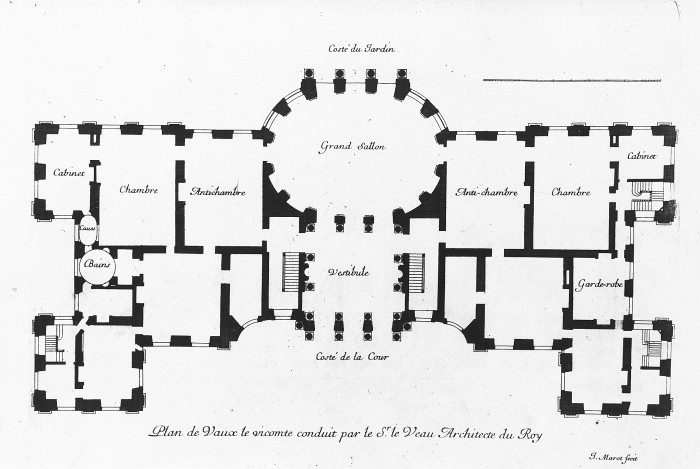
The Squirrel, the Grass Snake, and the Sun King
In each room of this splendid monument; the family emblem appears in the guise of a small lively and curious animal, the squirrel. However, in one of the studies, one can see frightened little squirrels being chased by grass snakes. Fouquet was quick to recognize in the snake, his enemy Colbert. Both men were extremely intelligent, but that was the only trait they had in common. Colbert was everything Fouquet was not: a taciturn hard-working fellow, often bitter and jealous. Unfortunately for him, Fouquet never properly assessed the magnitude of his hatred. Therefore, of the threat that this minister represented, being as loyal and close to the king as he was.
Neither did he take heed of the perfectly clear warning Louis XIV gave after the death of Mazarin when he assembled his ministers. The king declared: “Gentlemen, I brought you here to inform you that up until today, I let the deceased cardinal run my affairs of State. From now on, I will be governing myself”. A naïve Fouquet didn’t alter his habits in any way, and this lack of perceptiveness would prove to be his downfall. He had no idea that Colbert had inspected his “accounting errors” daily, and reported them to the king. Indeed, the Superintendent had been making some unreported profits on the side, while the king was after only one thing, absolute power.
A Celebration to Mark His Loyalty
Monsieur and Madame Fouquet received the king on the evening of August 17, 1661. Everything was ready, down to the smallest detail to welcome the 6,000 guests. The visit began with a tour of the gardens. Delighted guests walked down the paths, marveling at the fountains and waterfalls, and the grotto. Then they entered the castle through the huge oval drawing-room to have a light meal.
A raffle was held where all the guests were winners, the women walking away with jewelry and the men, firearms. While Le Brun explained the meaning of the painted allegories on the ceilings, Vatel was bustling about getting dinner ready. All too happy to please, Fouquet didn’t notice that the king found the rooms too big, the furniture too fancy, the gold-woven tapestries too pretty, and the paintings too evocative of his host’s power. Indeed, behind the king’s obliging smile lurked thoughts of bringing down Fouquet.
Finally, it was time for dinner. The ultimate in luxury and fashion, the feast took place in a space called a “dining room”. The most delicate dishes were served on beautiful silver and ruby dish sets; although malicious gossip would later spread that they were of gold. The evening continued with fireworks and a play by Molière and his company called “Les Fâcheux” (The Bores). At 2 o’clock in the morning, the king gave the signal to leave. A spray of rockets burst from the castle’s central dome, lighting up the sky. Fouquet didn’t forget a thing, and as required by tradition, he offered his castle to the king, who against all expectations… refused it!
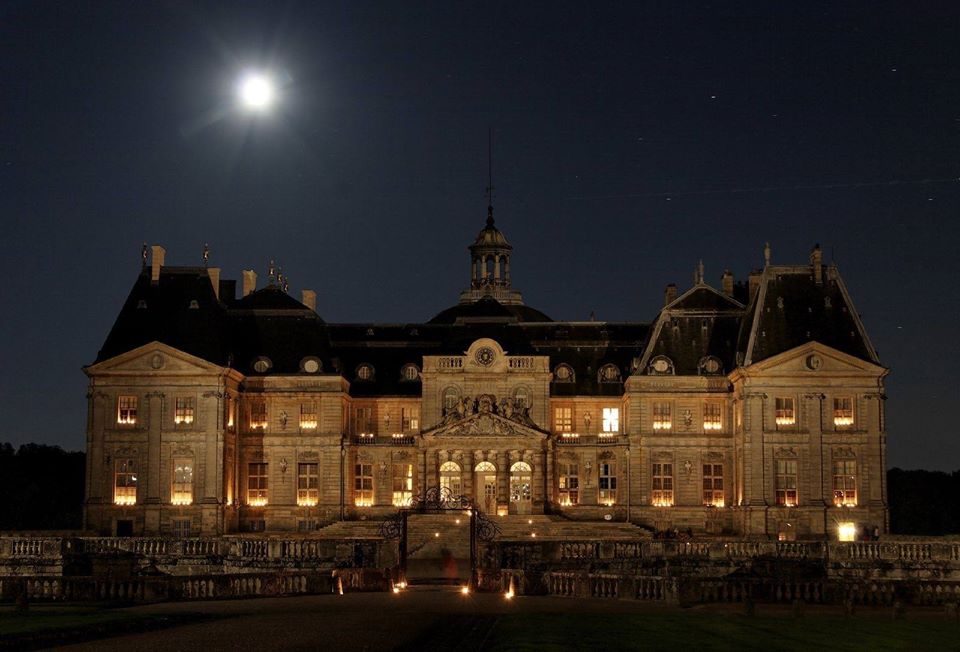
Reasons To Visit Vaux le Vicomte Castle
The story of this magnificent castle of Vaux-le-Vicomte is forever tied to the life of a man who was too rich, too smart, but also too self-confident. Fouquet was a master in the art of living; the evening of August 17, 1661, was the dazzling demonstration of it. However, it was also the straw that broke the camel’s back for a king who couldn’t stand to be outshined by anyone wealthier or more powerful than himself.
Louis XIV wasn’t content to simply deprive his minister of his freedom. Also, he stole from him all of his most valuable belongings. A few days after an arrest that had been planned long before the famous party, the black and white paving of Vaux was sent over to the Louvre, while dozens of big chestnut trees were uprooted and transplanted to the Trianon, and a mass of carps were fished out of the pools to fill the Marly fountains. Everything that Louis XIV saw at Vaux that evening served as inspiration for Versailles. He needed a bigger palace, even more sumptuous, and with that in mind, he hired Fouquet’s artists, Le Vau, Le Brun, and Le Nôtre, and set aside for himself the most precious objects, the tapestries, fabrics, furniture, vases, and 13,000 volumes from the extraordinary collection that included 27,000 books.
How lucky we are that having escaped the destructive madness of the French Revolution, and after many ups and downs and decades of neglect, the castle of Vaux-le-Vicomte now belongs to a family who has been relentlessly working to preserve this extraordinary heritage, ever since the end of the 19th century. It is a pleasurable must to visit this castle in order to understand the origin of the castle of Versailles. Please refer to this link: http://www.vaux-le-vicomte.com/en/ to check the numerous festivals that take place there. They allow the visitors to relive certain experiences of the castle’s glorious past.
